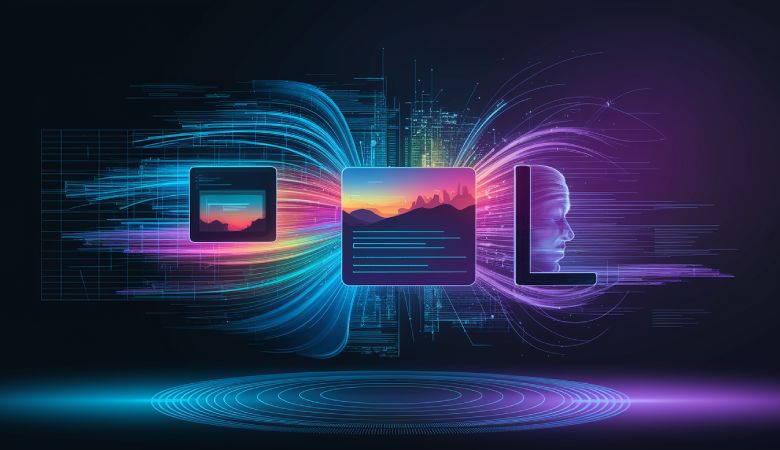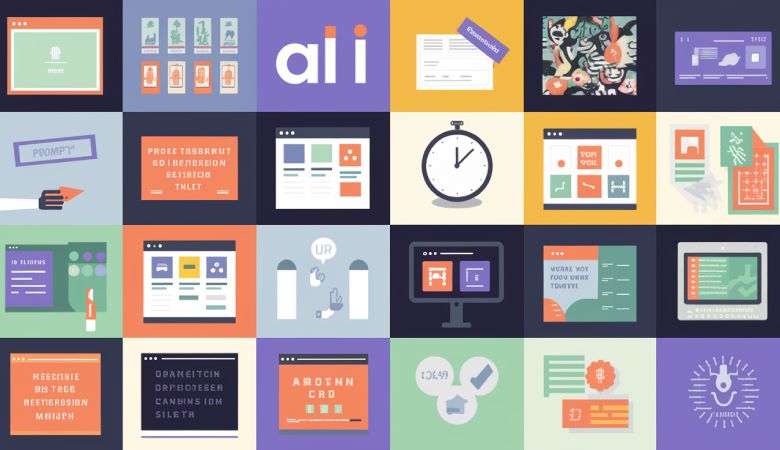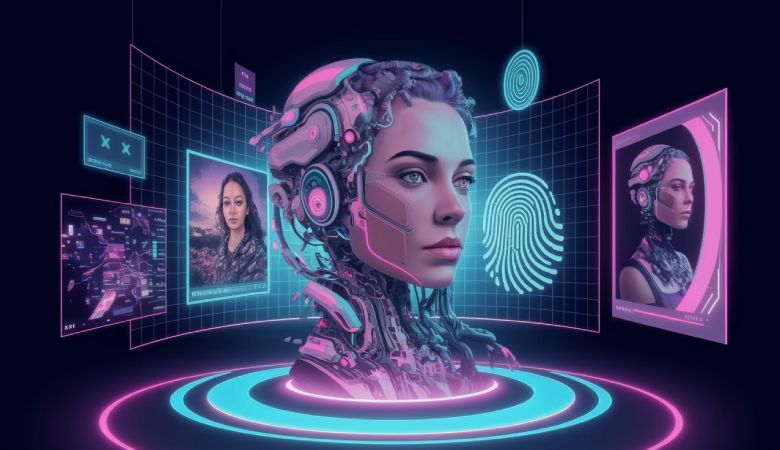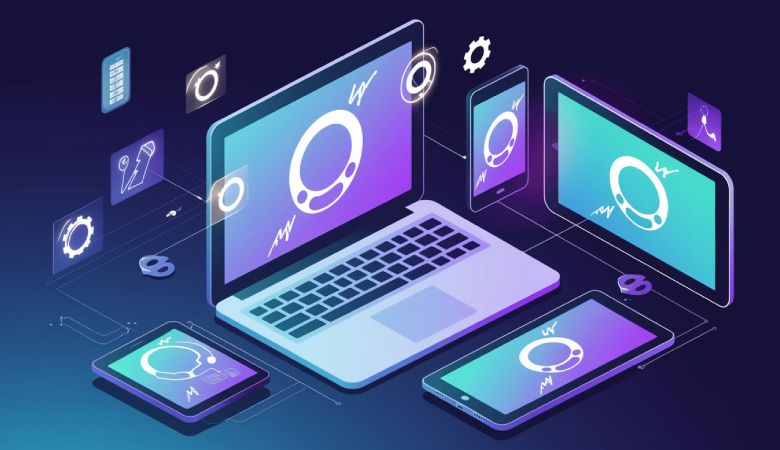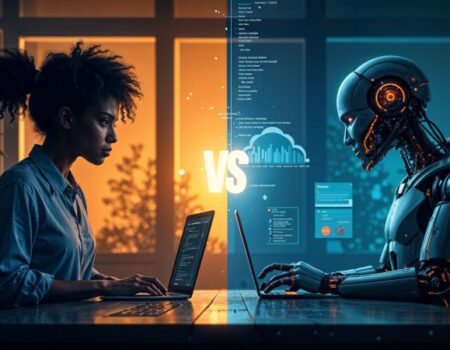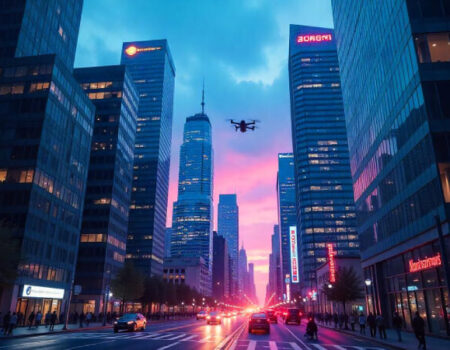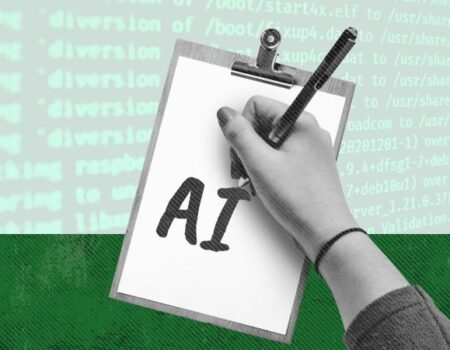The Best AI Image Generators for Marketers in 2025
You used to need a designer. Now, you just need the right prompt.
From 4K visuals rendered in seconds to ad creatives optimized as you build them, AI image generators in 2025 are less about novelty — and more about speed, brand safety, and performance. But here’s the thing: not all of them are built equally. Some are made for social teams juggling 20 formats a day. Others are precision tools for creatives who obsess over light, typography, and tone.
So which ones actually work for your marketing goals?
We tested them. All of them.
Across blogs, social campaigns, ecommerce workflows, and video thumbnails. What follows is your no-fluff, deeply updated guide to the Top 10 AI Image Generators dominating 2025 — ranked by what matters: output quality, usability, and marketing impact.
Let’s dive into the ones that marketers are raving about — and quietly replacing their old design tools with.
How Do AI Image Generators Work?
AI image generators use machine learning models—especially diffusion and transformer-based systems—to turn text prompts into visual content. Here’s how they do it:
- Text Interpretation: The AI breaks down your prompt (“a modern kitchen with natural lighting”) into visual concepts.
- Latent Space Mapping: The model pulls from millions of learned image features (shapes, styles, textures) to draft a composition.
- Image Generation: Through a process called diffusion, the AI gradually transforms noise into a clear, realistic image.
- Fine-Tuning: Newer tools apply post-processing like facial enhancement, typography alignment, or color correction.
- In short: You type, it interprets, it paints—at scale and speed that would take humans hours or days.
How We Tested the Best AI for Images
To determine the top AI image tools in 2025, we tested each platform against real marketing use cases. Here’s how:
- Prompt Variety: Each tool was given 10+ prompts—from “Product mockup with neon background” to “Poster for a spring sale with clear text.”
- Speed & Usability: I tracked time from prompt to usable image. we also noted ease of use, UI clarity, and onboarding flow.
- Marketing Relevance: I scored tools higher if they could output visuals for blogs, emails, paid ads, and brand decks without heavy post-editing.
- Text Rendering: Since marketers rely on posters, CTAs, and logos, we paid extra attention to how each tool handled embedded typography.
- Ethical Features: I looked for watermarking, data source transparency, and prompt warnings tied to copyrighted content.
Result? The five tools below consistently outperformed in accuracy, usability, and brand readiness.
What’s New in 2025
- Next-Gen Models: DALL·E 4, Midjourney v7, and Stable Diffusion 3 lead with cinematic realism and refined prompt understanding.
- Video Integration: Pika Labs and Runway ML now blur the line between still images and motion graphics.
- Built-in Ethics: Watermarking tools like Google’s SynthID and enhanced copyright compliance are standard features.
1. DALL·E 4
OpenAI’s DALL·E 4 continues to lead in brand-quality AI visuals, now boosted by seamless integration with ChatGPT-5. Marketers can describe changes using natural language like “Add cherry blossoms in the background” or “Make the packaging look more premium,” and get results in 4K. It also introduces bias-mitigation controls to create more inclusive visuals. DALL·E 4’s clean UI and attention to detail make it ideal for consistent branded content.
What’s New: ChatGPT-5 integration, 4K rendering, smarter human depictions
Pricing: $25/month (ChatGPT Plus)
Best For: Brands needing polished, on-brand visuals with editing options
Category Winner: Best for Brand Visual Consistency
Why Marketers Love It:
The ability to fine-tune and edit visuals by just describing changes makes it perfect for social content, product mockups, and storytelling posts.
Pros:
- High-resolution, brand-safe outputs
- Easy text-based editing
- Advanced bias mitigation tools
Cons:
- Limited to two images per prompt
- Slight delay during peak hours
What People Are Saying:
“The ability to just say ‘Make this fit our Spring palette’ and get results is a game changer.”
2. Midjourney v7
Now freed from its Discord-only roots, Midjourney v7 offers a powerful standalone experience tailored for agencies and creators. Its new “brand consistency” templates help generate visuals with defined aesthetic rules, ideal for campaigns needing a signature look. Privacy mode and smart style memory improve output control, making Midjourney not just beautiful, but strategic.
What’s New: Standalone UI, privacy mode, brand-style templates
Pricing: $15–$120/month
Best For: Agencies creating high-concept campaigns
Category Winner: Best for Creative Art Direction
Why Marketers Love It:
Midjourney gives total artistic control and excels in photorealism — ideal for mood boards, hero banners, and campaign mockups.
Pros:
- Striking aesthetic quality
- Supports multiple iterations fast
- New templates save hours in design
Cons:
- Not intuitive for first-timers
- Limited text-in-image support
What People Are Saying:
“It feels like having an art director in your browser.”
3. Meta AI (Imagine with Meta)
Meta’s in-platform AI image generator is built with performance marketing in mind. Integrated into the Meta Business Suite and Ads Manager, it helps advertisers rapidly create, test, and iterate visuals based on real-time performance data. This tight feedback loop allows marketers to experiment with creatives and optimize engagement without needing separate design tools. While it’s limited to Meta-owned channels, its efficiency and data integration give it a strong advantage for brands focusing on Facebook and Instagram advertising.
What’s New: Native in Meta Ads Manager, real-time creative variations
Pricing: Free within Meta ecosystem
Best For: A/B testing social ad creatives
Category Winner: Best for Ad Optimization
Why Marketers Love It:
Imagine with Meta gives advertisers the ability to generate, test, and tweak ad creatives on the fly, directly inside Ads Manager. It’s highly effective for campaign scaling and personalization.
Pros:
- Optimized for Facebook and Instagram
- Real-time ad variant testing
- Tight performance feedback loop
Cons:
- Only useful within Meta platforms
- Creative control is somewhat limited
What People Are Saying:
“It shaved hours off our A/B testing. More results, fewer revisions.”
4. Adobe Firefly
Adobe Firefly is every designer’s dream tool when paired with Photoshop. Trained exclusively on Adobe Stock for commercial safety, it now offers layered PSD outputs and tight Creative Cloud integration. It’s perfect for marketers who want editable visuals or mockups they can pass to design teams. Despite a steeper learning curve, it’s ideal for brand teams who already rely on Adobe products.
What’s New: Layered PSD outputs, Adobe Stock-trained dataset
Pricing: $25/month (Creative Cloud)
Best For: Designers needing layered, PSD-ready visuals
Category Winner: Best for Commercial Use & Editing
Why Marketers Love It:
Firefly’s outputs are safe, editable, and made to move seamlessly into production workflows.
Pros:
- Layered file output for real edits
- Safer licensing for commercial use
- Seamless for Photoshop users
Cons:
- Requires Adobe skills to unlock full potential
- Slower generation compared to lighter tools
What People Are Saying:
“It’s the only AI tool our legal team didn’t flag.”
5. Ideogram
Ideogram’s niche is text. It handles typography better than any other AI tool — perfect for creating posters, logo concepts, or social ads with embedded text. New features improve accuracy in font rendering and alignment, solving the long-standing issue of AI’s awkward relationship with text. For content marketers working on promos and calls-to-action, this is the top pick.
What’s New: Superior text-in-image generation, enhanced layout control
Pricing: Free tier + $20/month for Pro
Best For: Social ads, posters, and branded text visuals
Category Winner: Best for Text-Based Imagery
Why Marketers Love It:
Ideogram turns headlines into visuals, making every ad or promo post more effective.
Pros:
- Sharp, accurate font rendering
- Works well for logo mocks and banners
- Quick to learn
Cons:
- Less flexibility in abstract visuals
- Not ideal for photorealism
What People Are Saying:
“It’s finally possible to trust AI with ad text.”
6. Clipdrop by Stability AI
Once known for its background remover, Clipdrop has evolved into a lightweight but powerful enhancement and inpainting tool. With drag-and-drop editing, you can clean up products, swap elements, or upgrade lighting in seconds. It’s especially useful for ecommerce teams and creatives on the move who need polished edits without opening Photoshop.
What’s New: AI-powered inpainting, smarter lighting corrections
Pricing: Free tier + $20/month Pro
Best For: Ecommerce teams needing fast visual cleanup
Category Winner: Best for Product Enhancement
Why Marketers Love It:
Clipdrop makes post-editing fast — no learning curve, just quick results.
Pros:
- Simple UI with powerful enhancements
- Great for background swaps
- Fast and intuitive
Cons:
- Not built for full image generation
- Limited to editing rather than creating from scratch
What People Are Saying:
“It’s our go-to for fixing product shots on deadline.”
7. Runway ML (Gen-3 Alpha)
Runway’s Gen-3 Alpha brings cutting-edge fusion between image and video. Ideal for marketers who want to convert static content into animated explainer clips or product walkthroughs. It’s used by content creators and brands looking to elevate storytelling. With built-in background removal and lip sync capabilities, Runway excels at social and short-form video work.
What’s New: Gen-3 AI video model, image-to-video workflows
Pricing: Free basic use, $12–$76/month for Pro
Best For: Social teams turning images into short videos
Category Winner: Best for Image-to-Video
Why Marketers Love It:
Runway bridges the gap between image and motion, all in one place.
Pros:
- Converts AI images into videos
- Supports multiple social video formats
- Great animation tools
Cons:
- Video rendering can take time
- Best results need creative prompts
What People Are Saying:
“Runway helps us animate static blog graphics into Reels — pure magic.”
8. Canva Magic Media
Canva’s Magic Media tool is now a powerhouse for content creators, offering image and video generation right within Canva’s drag-and-drop editor. It’s built for scale — marketers can instantly resize visuals for Instagram, LinkedIn, TikTok, and more, all while applying brand kits. The new multi-format export and Magic Resize save hours of manual work, making it perfect for solopreneurs, social teams, and ad agencies.
What’s New: Smart resize, AI video + image generation in one tool
Pricing: Free tier + $14.99/month (Pro)
Best For: Social media teams creating multi-platform visuals
Category Winner: Best for Cross-Platform Content Creation
Why Marketers Love It:
You can brainstorm, design, and publish to multiple channels — without leaving Canva.
Pros:
- All-in-one editor with AI built-in
- Magic Resize for social media formats
- Easy brand kit integration
Cons:
- Less creative control than standalone AI tools
- AI outputs can feel “templated” without extra editing
What People Are Saying:
“It’s our daily content machine — a week’s worth of posts in an hour.”
9. DreamStudio by Stability AI
DreamStudio remains one of the most customizable text-to-image tools, now featuring fine-tuned model settings and enhanced prompt control. Built on Stable Diffusion XL, it offers unmatched flexibility for brands needing full visual freedom — especially in industries with strict creative guidelines. It’s an ideal choice for advanced users who want to tweak every detail and keep everything local if needed.
What’s New: SDXL 1.5 engine, enhanced control sliders for realism
Pricing: Pay-as-you-go credits
Best For: Advanced marketers and designers needing deep customization
Category Winner: Best for Creative Flexibility
Why Marketers Love It:
DreamStudio gives total prompt control and export freedom, which is rare in today’s “walled garden” tools.
Pros:
- High creative flexibility
- Transparent model settings
- No subscription pressure
Cons:
- Steeper learning curve
- Interface feels more technical
What People Are Saying:
“We needed full control over outputs, and DreamStudio delivered every time.”
10. Fotor AI Image Generator
Fotor brings AI creativity to casual marketers, with a strong focus on aesthetics and user-friendliness. Its tools are designed for creating posters, collages, and social banners with built-in templates and art styles. The 2025 update improves scene understanding, making prompts like “futuristic coffee shop at dusk” generate stunning, Instagram-ready images. It’s ideal for SMBs and creators who want eye-catching designs without complex steps.
What’s New: AI Art Generator 2.0, improved lighting and perspective rendering
Pricing: Free tier + $8.99/month for Pro
Best For: Entrepreneurs and creators making promotional visuals
Category Winner: Best for Fast Design Inspiration
Why Marketers Love It:
Fotor delivers beautiful results fast — no setup, no fuss.
Pros:
- Intuitive interface
- Fast generation for flyers, thumbnails, posters
- Variety of styles for different moods
Cons:
- Not ideal for brand consistency
- Limited editing once image is generated
What People Are Saying:
“It’s like having a graphic designer when you don’t have one.”
Critical Updates for 2025
AI image generation in 2025 goes beyond creativity—it’s about responsible, efficient, and inclusive content creation. As capabilities grow, so do the expectations. Here are the three most important updates every marketer should know.
Legal Risks Are Rising
With intellectual property laws tightening, AI platforms now actively block prompts that reference trademarked content. Phrases like “Marvel-style hero” or “Disney castle” can trigger warnings or result in no output. To stay compliant and future-proof, marketers are shifting toward original concepts, brand-aligned styles, and unique aesthetics. This not only avoids legal issues but also reinforces authentic storytelling.
Workflow Efficiency Has Leveled Up
Speed matters more than ever, and AI tools are meeting that demand. Platforms like Canva Magic Media now offer auto-resizing features that adapt images for various formats—ads, blogs, social posts, and vertical video. This automation helps reduce turnaround time and eliminates the need for manual resizing, freeing up marketers to focus on strategy rather than production.
Partner with our Digital Marketing Agency
Ask Engage Coders to create a comprehensive and inclusive digital marketing plan that takes your business to new heights.
Bias Controls Are Now the Standard
One of the most significant advancements in 2025 is the introduction of built-in diversity controls. Most major tools now offer sliders that let users adjust features such as ethnicity, age, and body type. This is a major step forward in addressing historical biases in AI-generated content, giving marketers greater control in creating visuals that reflect a broader, more inclusive audience.

